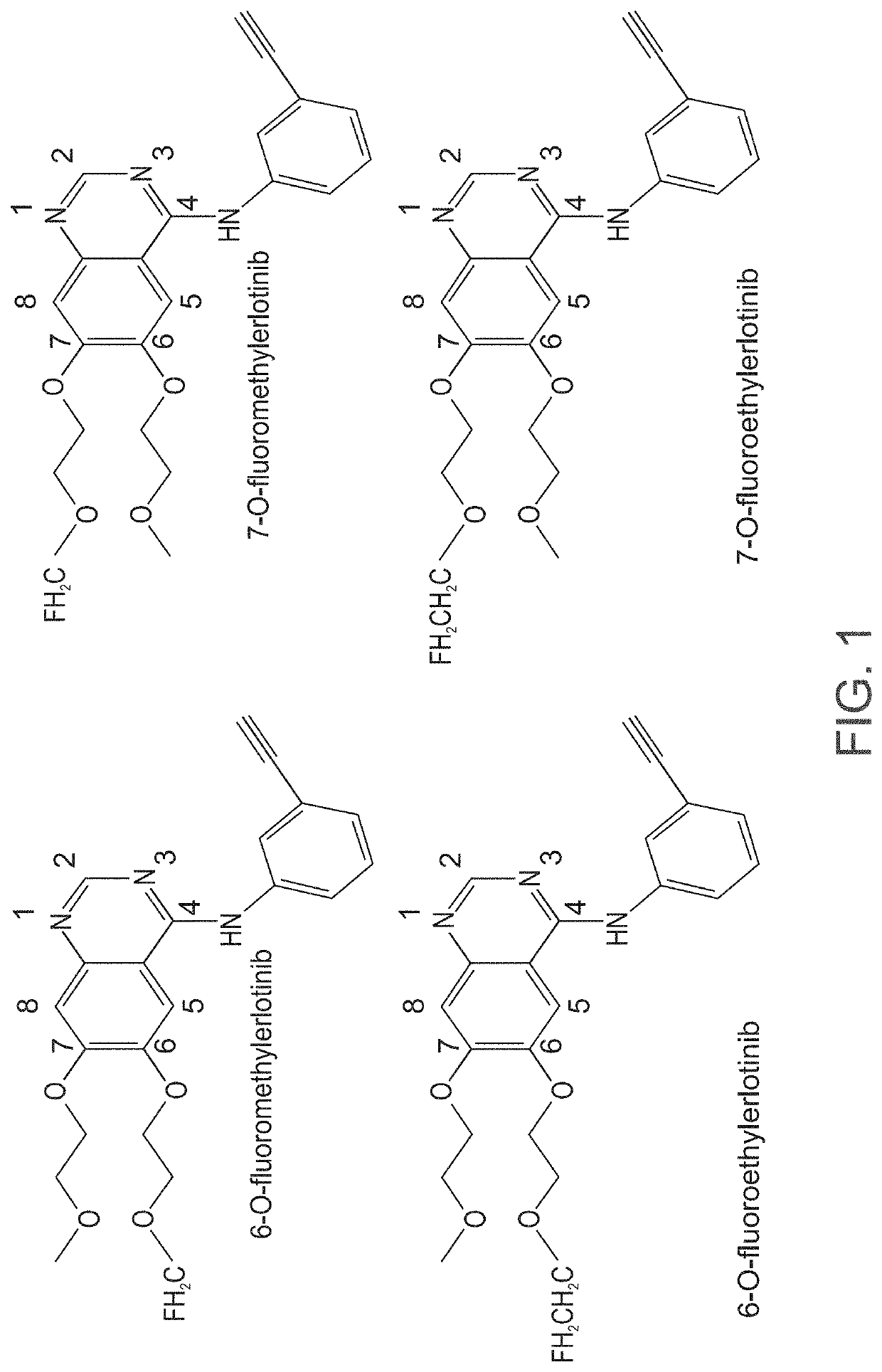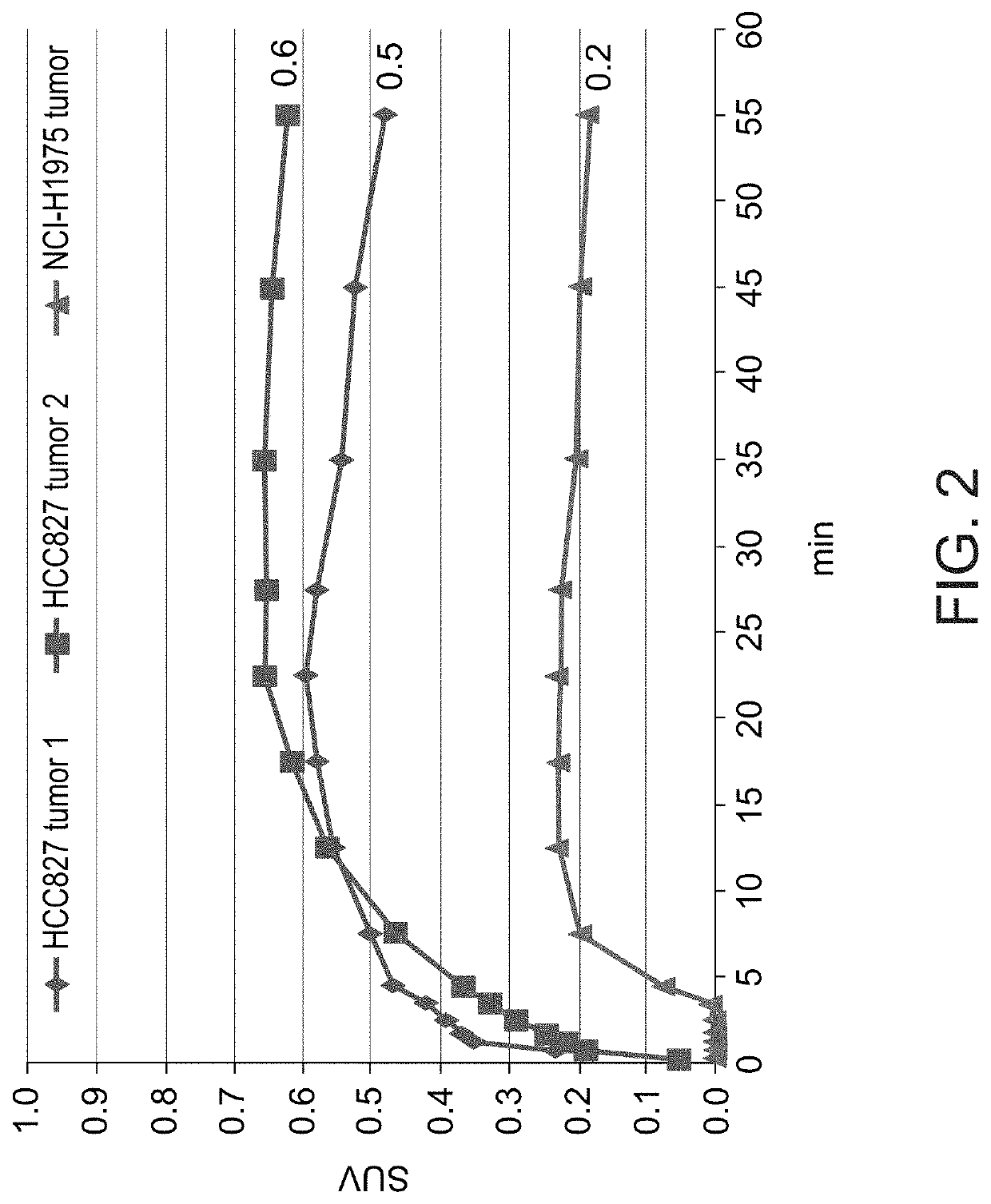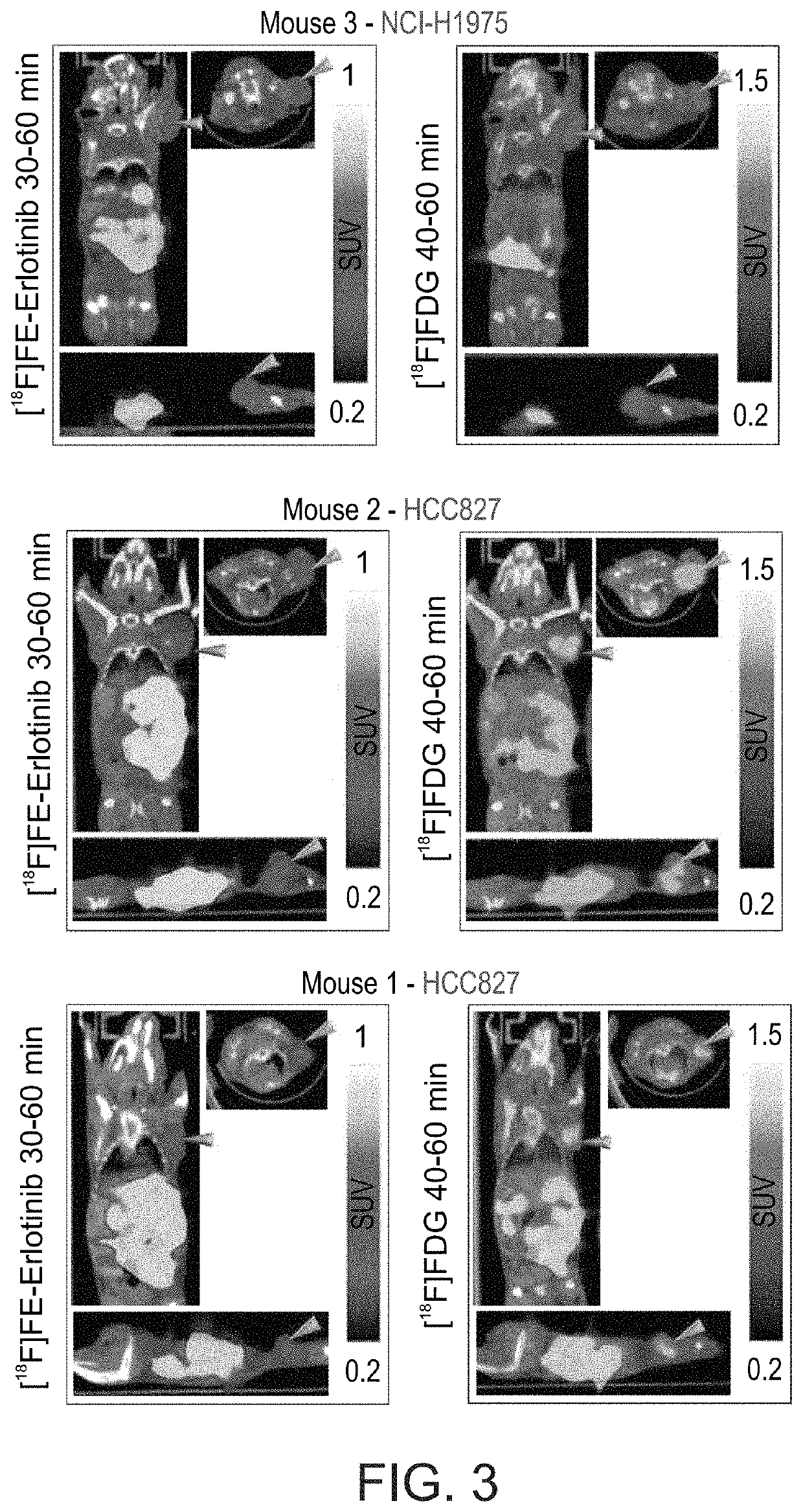Radiolabeled erlotinib analogs and uses thereof
a technology of erlotinib and radiolabeled erlotinib, which is applied in the field of radiopharmaceuticals, can solve the problems of disadvantageous side effects, uncontrolled cell proliferation, and frequent aberrant expression of kinases, and achieve the effect of facilitating patient selection
- Summary
- Abstract
- Description
- Claims
- Application Information
AI Technical Summary
Benefits of technology
Problems solved by technology
Method used
Image
Examples
example 1
Chemical and Radio-Syntheses
[0525]Materials and Experimental Methods:
[0526]6-O-desmethylerlotinib (OSI 420) and 7-O-desmethylerlotinib (OSI 413) are obtainable from commercial vendors (e.g., Selleck Chemicals).
[0527]Fluoroethyltosylate, 1,2-Bis(tosyloxy)ethane and kyptofix K2.2.2 were obtained from ABX, Radeberg, Germany.
[0528]N,N-Dimethylformamide, Sodium hydride and Potassium carbonate were purchased from sigma Aldrich (Rehovot, Israel).
[0529]Acetonitrile and ethanol were purchased from Merck (Darmstadt, Germany).
[0530]Radioactive halides are generated as follows: Radioactive fluoride-18 ion is produced via the 18O(p,n)18F nuclear reaction using a IBA cyclotron equipped with a fluorine-18 target. The [18F]fluoride is delivered from the cyclotron (in a 3 ml bolus of [18O]H2O) and trapped on a anion exchange cartridge to remove [18O]H2O. [18F]Fluoride is then eluted into the reaction vessel using aqueous potassium carbonate (4 mg in 0.5 mL of water). A solution of kryptofix-2.2.2 (1...
example 2
In Vitro Assays
[0580]Materials:
[0581]NCI-H1975 and HCC827 were obtained from the ATCC. QG56 cells were obtained from Prof. Alexander Levitzki's lab, The Silberman Institute of Life Sciences, the Hebrew University, Jerusalem. The NCI-H3255 human NSCLC cell line was obtained from the National Cancer Institute—Division of Cancer Treatment and Diagnosis (NCI-DCTD) tumor repository, Frederick, Md., USA, and was regularly maintained in ACL-4 medium, containing insulin (0.02 mg / ml), transferrin (0.01 mg / ml), sodium selenite (25 nM), hydrocortisone (50 nM), EGF (1 ng / ml), ethanolamine (0.01 mM), O-phosphorylethanolamine (0.01 mM), triiodothyronine (100 pM), BSA (0.2% (w / v)), HEPES (10 mM), sodium pyruvate (0.5 mM) and L-glutamine (2 mM) in RMPI-1640 medium (Invitrogen™, Life Technologies, Mass., USA). QG56 were maintained in RMPI-1640 medium (Invitrogen™). HCC827 and NCI-H1975 cells were maintained in RMPI-1640 (#30-2001, ATCC), at 37° C. in a humidified atmosphere of 95% air and 5% CO2. Al...
example 3
Pet Studies
[0589]PET / CT Scans of Tumor-Bearing Mice:
[0590]Dynamic (1 hour) PET scans are performed using Inveon™ MM PET-CT small animal-dedicated scanner (Siemens Medical Solutions, USA). PET acquisitions of NSCLC tumor-bearing mice are carried out following intravenous (i.v.) administration of 18F-labeled erlotinib analogs as described herein. Using image analysis tools, volume of interests (VOIs) are drawn for selected organs based on the PET and CT images, and the kinetics of radioactivity distribution in vivo (time-activity curves, (TACs)) is determined for these organs, and primarily for the NSCLC xenografts. The standardized uptake values (SUVs) of each radiolabeled compound in tumors are calculated and compared between the different tumors.
[0591]In a preliminary PET / CT study, three mice (two bearing HCC827 (erlotinib-sensitive) tumors and one with an NCI-H1975 (erlotinib-resistant tumor) were scanned for 60 minutes following i.v. injection of [18F]6-FEE (6.26±4.4 Mbq). The ob...
PUM
| Property | Measurement | Unit |
|---|---|---|
| time | aaaaa | aaaaa |
| time | aaaaa | aaaaa |
| time | aaaaa | aaaaa |
Abstract
Description
Claims
Application Information
 Login to View More
Login to View More - R&D
- Intellectual Property
- Life Sciences
- Materials
- Tech Scout
- Unparalleled Data Quality
- Higher Quality Content
- 60% Fewer Hallucinations
Browse by: Latest US Patents, China's latest patents, Technical Efficacy Thesaurus, Application Domain, Technology Topic, Popular Technical Reports.
© 2025 PatSnap. All rights reserved.Legal|Privacy policy|Modern Slavery Act Transparency Statement|Sitemap|About US| Contact US: help@patsnap.com



